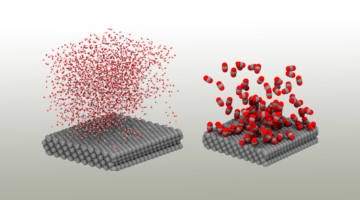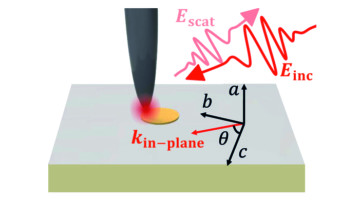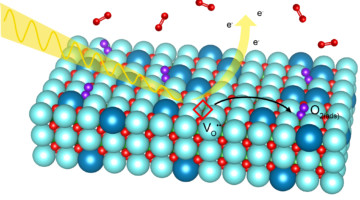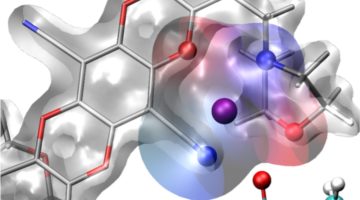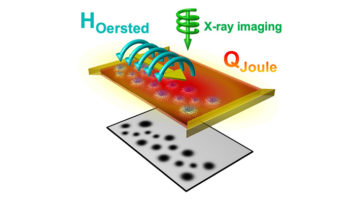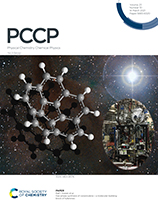Researchers have made the world’s thinnest (one atom thick) magnet that’s chemically stable under ambient conditions. The two-dimensional material, magnetically characterized at the ALS, could enable big advances in next-generation memory devices, computing, spintronics, and quantum physics. Read more »![]()
![]()
Exquisitely Selective CO2 Reduction on Silver
Researchers electrochemically reduced CO2 to CO with nearly perfect selectivity over other products by adding an organic compound to the surface of a silver electrode. With theoretical analyses and ALS data, the work revealed the key role of the microenvironment in promoting the conversion of CO2, a greenhouse gas, into useful products. Read more »![]()
![]()
A Powerful Infrared Technique Broadens Its Horizons
Scattering-type scanning near-field optical microscopy (s-SNOM) focuses infrared light to dimensions below the diffraction limit, measuring properties with components perpendicular to the sample surface. Researchers have now devised a way to probe components parallel to the sample, where the technique has been less sensitive. Read more »
This Exotic Particle Had an Out-of-Body Experience; These Scientists Took a Picture of It
Scientists have taken the clearest picture yet of electronic particles that make up a mysterious magnetic state called a quantum spin liquid (QSL), in which electrons decompose into spin-like particles (spinons) and charge-like particles (chargons). The achievement could facilitate the development of superfast quantum computers and energy-efficient superconductors. Read more »
Scientists Uncover a Different Facet of Fuel-Cell Chemistry
Solid oxide fuel cells are a promising technology for cleanly converting chemical energy to electrical energy. To improve the efficiency of these devices, researchers studied a model electrode material in a new way—by exposing a different facet of its crystal structure to oxygen gas at operating pressures and temperatures. Read more »
To Design Truly Compostable Plastic, Scientists Take Cues From Nature
Researchers have designed an enzyme-activated compostable plastic that could diminish microplastics pollution and holds great promise for plastics upcycling. The material can be broken down to its building blocks—small individual molecules called monomers—and then reformed into a new compostable plastic product. Read more »
Designing Selective Membranes for Batteries Using a Drug Discovery Toolbox
Researchers designed a polymer membrane with molecular cages built into its pores that hold positively charged ions from a lithium salt. These “solvation cages” increased lithium-ion flow by an order of magnitude and could allow high-voltage battery cells to operate at higher power and more efficiently, important for both electric vehicles and aircraft. Read more »
Skyrmion Creation and Annihilation Made Simple
Researchers developed a simple approach to writing and deleting skyrmions on demand, using heat and magnetic fields generated by an electrical current, by-products normally considered problematic. The ubiquitous character of these effects, coupled with simplicity of design, offers much-needed scalability and broad applicability. Read more »
Gas-phase synthesis of corannulene—a molecular building block of fullerenes
Fullerenes have been implicated to play a key role in the astrochemical evolution of the interstellar medium. However, the formation mechanism of even their simplest molecular building block—corannulene—has remained elusive. Here we demonstrate that corannulene can be synthesized in the gas phase through reactions mimicking conditions in carbon-rich circumstellar envelopes. Read more »
Probing Composite Materials to Make Better Batteries
Researchers found that when an ion-conducting polymer composite is placed in an electric field, it forms ion-rich hotspots that continue to grow for hours after the field is removed. The study opens a new path to understanding the dynamic structure of composite materials for smaller, lighter batteries. Read more »![]()
![]()
- « Previous Page
- 1
- 2
- 3
- 4
- 5
- 6
- …
- 8
- Next Page »

